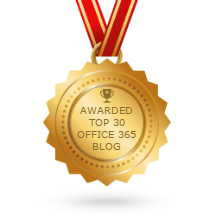“Terrible! I was accessing my data in Microsoft Exchange and while deleting some emails, I have accidentally erased few crucial emails too. I just want to free up some space from the server, however, now I am in a big trouble. I have searched every possible way to recover deleted mailbox in Exchange Server 2013, but all my efforts go in vain. I need all the files for some important use as soon as possible. I am sure I am not the only one who has done this mistake. Therefore, I am seeking for the help from those who have gone through the same situation or anybody who can help me out.”
Just like this user, if you have also deleted the mailbox in Exchange Server accidentally or internally and now want them back, then you are on the right place. Here, in the forthcoming section of this blog, we are going to learn a manual solution for restoring a deleted mailbox in Exchange 2010, 2007, 2003. Apart from this, we will also introduce a unique trick to perform this task easily.
Exchange Server Mailbox after Deletion
At the time, the account, which is email-enabled, is removed from the Active Directory of Exchange or in case the erased mailbox is with use of Exchange Management Console, then the deleted or removed mailbox is maintained as the disconnected mailbox. This happens as per the mailbox retention setting. Therefore, users can reconnect the deleted mailbox to the original or other account of user if mandatory. However, it should be noted that:
- The mailboxes, which have been erased can or cannot show as a ‘disconnected mailbox’ right away, once they have been removed. It may take about few minutes to an hour to appear as a disconnected mailbox. In case, it does not happen, then it can be categorized as a different issue and users can look for other solutions.
- It is feasible to connect a disconnected mailbox to the account of user only in case the account the mailbox is not associated with it.
How to Connect a Disconnected Exchange Mailbox
Now, to connect a disconnected Exchange mailbox users can opt for various methods such as by using Exchange Management Shell (EMS) in Exchange Server, Exchange Management Console (EMC), and also by using SysTools Exchange EDB Recovery software to recover deleted mailbox in Exchange 2013, 2010, 2007, 2003.
Method 1: Connect Disconnected Mailbox via EMC- For the restoration of Exchange mailbox through EMC; you need perform specific steps as mentioned below:
- First, open EMC
- Now, in EMC dialog box, enlarge Recipient Configuration node and after this, select the Disconnected Mailbox node available under it
- Then, right click on mailbox, which has to be recovered. Click on Connect
- Next, select the ‘mailbox type’ in the dialog box of Connect Mailbox and then, hit on Next
- From the dialog box Mailbox Settings in Connect Mailbox, you need to select Existing User and then click on the tab of Browse
- Then, from Select User dialog box, select account of user to that mailbox has to be synchronized or connected. Once it is done, hit on OK
- Finally, in the box of Alias, type the name of the mailbox. Then on Next
Now, after following these steps, users can connect those mailboxes that are disconnected.
Limitation: First, it is a time taking process. Another, thing is that it needs some technical knowledge.
Method 2: Connect Disconnected Mailbox via EMS - Now, another method for connecting mailbox, which is disconnected is with the help of EMS. For this, you can use Set-Mailbox syntax as follows:
Drawbacks: Like the above-mentioned manual solution, this approach also has some limitations associated with it. It does not assure a guaranteed solution. Moreover, this also requires knowledge on technical things.
Method 3: Using SysTools Exchange Recovery Software - This is the best way to recover deleted mailbox in Exchange Server 2013, 2010, 2007, 2003. This tool has been designed for the recovery of Exchange EDB files. It also has the potential to recover deleted emails from MS Exchange in an easy manner. The tool can even export the resultant file after the completion of recovery process. Moreover, the software provides the accurate and guaranteed results without any limitations. This is how the tool works:
- First, run the Exchange Recovery tool in your machine
- Now, add the EDB file that you want to recover
- After that, preview all the emails as well attachments (Even the deleted emails will be displayed)
- Finally, you can even export the resultant file to Windows Live Mail, PST, or Office 365
To Sum It Up
After considering the need to recover deleted mailbox in Exchange Server 2003, 2007, 2010, 2013, we have discussed manual methods in the above blog. Without any doubt, manual solutions are easy to find, but always associated with some drawbacks. Considering this, we have also come up with an alternative method, which is using SysTools Exchange recovery software. It is an easy and simple approach to perform the entire procedure.


















0 comments:
Post a Comment